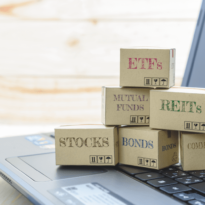Maximilien Macmillan, head of Strategic Asset Allocation Research, abrdn, considers recent asset correlation, the pattern of market returns across asset classes and how the escalation of stress in the banking sector may affect markets.
“War is the realm of uncertainty; three quarters of the factors on which action in war is based are wrapped in a fog of greater or lesser uncertainty. A sensitive and discriminating judgment is called for; a skilled intelligence to scent out the truth.” Carl von Clausewitz
The goal of investors is to generate strong returns while mitigating drawdowns. Over the past several decades, in an environment of declining inflation and interest rates, bonds and equities trended up in price, while bonds offered conditional diversification in economic downturns as policy rates were cut. A broad and relatively static combination of assets, a diversified portfolio, was thus effective in meeting investor goals, as the market itself delivered the best portfolio.
Diversification, however, is not an end in itself, merely a means to achieve drawdown mitigation and a smoother path of portfolio returns. As markets have become more dominated by inflation and aggressive policy responses to it, so too has the negative correlation upon which investors previously relied upon, failed. One solution is to seek alternative assets offering diversification even amidst a policy dominated environment. But the effectiveness will only be partial at portfolio level. Another is to understand that the asset performance relates to the macro environment and be dynamic in managing the asset allocation accordingly.
This requires an understanding of the underlying macro drivers of markets, a view on how the cycle is likely to play out, and a correct appraisal of what the market is discounting.
When seeking to interpret markets, a hot air balloon is more useful than a microscope. While there can be a huge number of factors driving the price of a security, there are only few possible causes of a specific pattern of market returns across asset classes. Zooming out, looking down at markets from high above, offers a wholistic vantage point helping to visualise this return pattern, uncovering the true underlying and unifying macro drivers.
No rational investment is possible without an assessment of what is already in the price. We invest not for asset classes or securities we “like”, but instead for those we consider to be mispriced.
Asset correlation
In a market driven by economic growth or downturns, bonds and equities tend to be inversely correlated. Positive growth shocks lead to lower bond prices and higher equities, while recessions see bonds perform well and equities sell off.
When the marginal shock comes from monetary policy, however, the correlation switches. A dovish policy shock sends both assets soaring, while a hawkish shock sees both sell off. The dollar is typically the only place to hide in such a hawkish shock, particularly if it is led by the Fed.
In this sense, there was nothing particularly unusual about the simultaneous sell off in bonds and equities last year. The surprise to the market was how long it persisted and how high government bond yields were pushed. Of course, growth and policy changes often occur simultaneously, so that higher interest rates typically occur amidst economic strength, helping dampen the blow to equities by supporting earnings. But last year, acting too late, the Fed had to hike into economic weakness, and with such violence that the policy changes dominated the overall performance of assets.
It also explains why, as the Fed became more convinced that inflation had peaked and guided the market towards the expectation of a slowdown in the pace of hikes early November, the reduced policy uncertainty generated a correlated rally in bonds and equities, with EM outperformance couched in dollar weakness. With economic data improving slightly as the year started, markets have dared to hope for, and to price, a prolonged economic cycle, one in which rates remain higher for longer as growth remains robust.
Tipping into recession
But we continue to believe that interest rate hikes will prove to be enough, indeed too much, for the economy to bear as the year progresses, tipping developed markets into recession. The recent escalation of stress in the US and European banking sector is symptomatic of this interest rate hike overload, and a reminder of what it takes to slow an economy, increase the unemployment rate and generate spare capacity to weaken inflation.
In an environment now driven more by fear of a downside shock to economic growth, as stress in the financial markets seeps through into the economy, the pattern of market returns is switching to the more typical inverse bond/equity correlation to which investors are accustomed, as bonds begin to price a deeper rate cutting cycle.
Amidst this late cycle fog of uncertainty, markets had swung too far in the direction of growth optimism. Though they have begun to reprice, we expect market moves to continue to exhibit corporate risk sell offs and treasury bond performance throughout the year.
The gulf between our outlook and the market pricing presents an opportunity in multi-asset funds able to manage the total fund risk profile. Even as last year’s volatility has made bonds seem untouchable, we think the outlook is now far more skewed in their favour, and risk profiles should be tilted towards them and other cyclically defensive strategies.
There is no value without a view, and multi asset funds have the freedom to position for the perceived market mispricing, wherever it may happen to be.



































